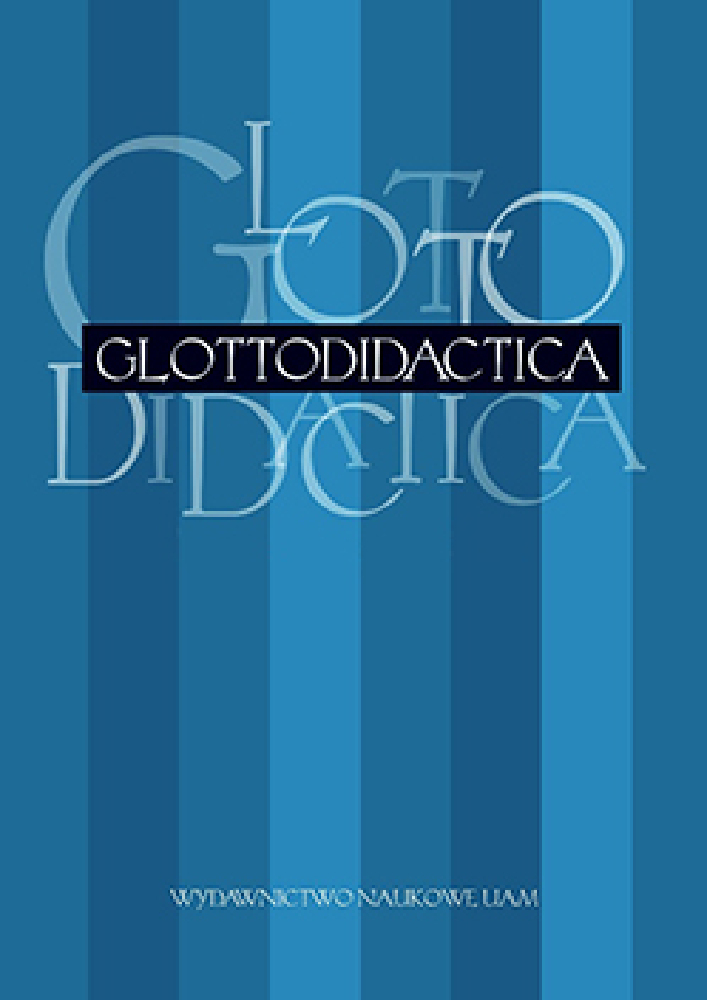Abstract
The following article presents a study on interaction in a Content and Language Integrated Learning classroom. Starting with a brief description of van Lier’s interaction framework,and a general overview of the qualitative studies, the article focuses particularly on the description and analysis of various types of interaction as well as their functions observed in a CLIL classroomReferences
Appel, R., Muysken, P., 1988. Language Contact and Bilingualism. London: Edward Arnold a division of Hodder & Stoughton, 10–52.
Coyle, D., Hood, P., Marsh, D., 2010. Content and Language Integrated Learning. Cambridge: Cambridge University Press.
Crandall, J., Tucker, G.R., 1990. Content-based instruction in second and foreign languages. In: Padilla, A., Fairchild, H.H., Valadez, C. (eds.). Foreign language education: Issues and strategies. Newbury Park: CA: Sage, 187–200.
Dam, L., 2000. Why focus on learning rather than teaching? From theory to practice. In: Little, D., Dam, L., Timmer, J. (eds.). Focus on Learning rather than Teaching: why and how? Papers from the IATEFL conference on learner independence. Dublin: Trinity College Dublin, 38–55.
Faerch, C., Kasper, G., 1983. Strategies in interlanguage communication. London: Longman.
Fitzgerald, S., Morrall, A., Morrison, B., 1996. Catering for individual learning styles: experiences of orienting students in an Asian self-access centre. Autonomy 2000: the development of learning independence in language learning, 55–69.
Fruhauf, G., Coyle, D., Christ, I. (eds.), 1996. Teaching content in a foreign language. Practice and Perspectives in European bilingual education. Alkmaar: European Platform for Dutch Education, 172–187.
Hall, J.K., Verplaetse, L.S. (eds.), 2000 Second and Foreign Language Learning through Classroom Interaction. Mahwah, NJ: Lawrence Erlbaum, 1–15.
Hall, J.K., Walsh, M., 2002. Teacher-student interaction and language learning. Annual Review of Applied Linguistics, 22, 186–203.
van Lier, L., 1988. The Classroom and the Language Learner. London–New York: Longman.
van Lier, L., 1991. Inside the classroom: learning processes and teaching procedures. Applied Language Learning 2, 48–64.
Marsh, D., Marsland, B. (eds.), 1999. Learning with Languages. A professional Development Programme for Introducing Content and Language Integrated Learning. Finland: University of Jyväskylä.
Papaja, K., 2010. A Qualitative Evaluation of Content and Language Integrated Learning (CLIL) in Secondary Education. Unpublished PhD thesis. Katowice: Institute of English, University of Silesia.
Wolff, D., 2005. Content and Language Integrated Learning in HAL. Volume 5, Chapter 21, 1–22.
License
Authors
Authors of texts accepted for publication in Glottodidactica are required to complete, sign and return to the Editorial team’s office the Agreement for granting a royalty-free license to works with a commitment to grant a CC sub-license.
Under the agreement, the authors of the texts published in Glottodidactica grant Adam Mickiewicz University in Poznań a non-exclusive, royalty-free license and authorize the use of Attribution-NoDerivatives 4.0 International (CC BY-ND 4.0) Creative Commons sub-license.
The authors retain the right to the free disposal of the work.
Users
Interested Internet users are entitled to use works that have been published in Glottodidactica since 2016, under the following conditions:
▪ attribution – obligation to provide, together with the distributed work, information about the authorship, title, source (link to the original work, DOI) and the license itself.
▪ no derivatives – the work must be preserved in its original form. Without the author's consent, it is not possible to distribute the modified work in the form of translations, publications, etc.
Copyrights are reserved for all texts published before 2016.
Miscellaneous
Adam Mickiewicz University in Poznań retains the property right as a whole (layout, graphic form, title, cover design, logo etc.).
Privacy statement
The names and email addresses published on this journal site will be used exclusively for the purposes declared by this journal and cannot be used for any other purpose or by any other party.




